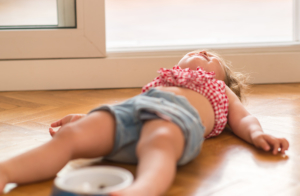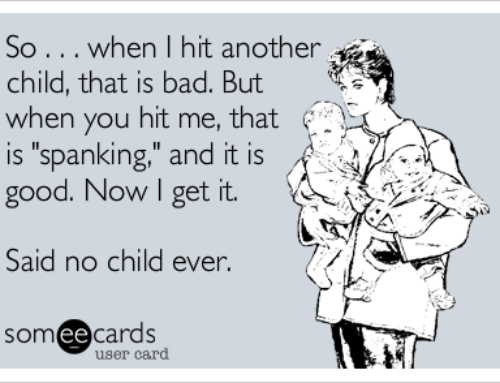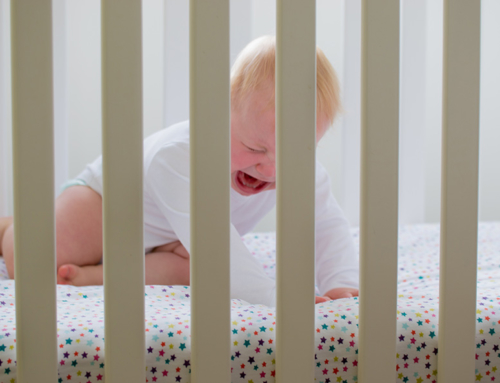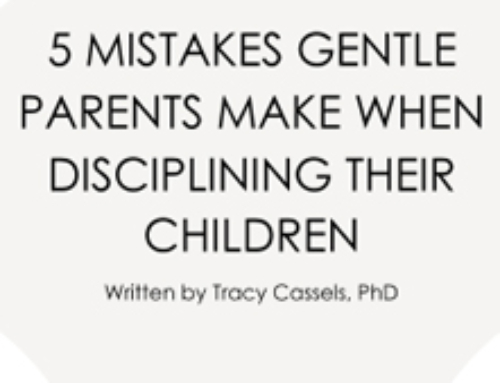
You go to get your child some food and he insists it be this exact thing, cut this exact way, placed on the plate in this exact manner or he won’t eat it. Your daughter wants to play but gets very upset if you try to deviate from a very set script she has decided upon ahead of time. Your child has a nightmare and you wake up to him banging his head against the bed over and over. Your child zones out and you find times when you simply can’t even get her to respond to you.
These behaviours often cause parents to either get angry and think their child is a control freak or panic that something is very wrong with their child. Although there may be times when these can be something that deserves more attention (remember you always have to look at the whole of a child’s life, not just one or two behaviours), often these are actually ways of self-soothing.
Yep, self-soothing.
Now I’m not saying these are beneficial ways to self-soothe, quite the contrary, but we have to first understand what our children are doing if we’re going to take the time to help them through these behaviours. You see, if you view something like the manic control as manipulative or negative, we are unlikely to approach it in a way that helps our child move past whatever is causing this need for control. If instead we view it as a response to feelings of anxiety that may be brought about by any number of things, we can instead focus our efforts on helping our children there.
What are self-soothing behaviours?
I know most people think of the positive self-soothing, or emotion regulating, behaviours like deep breathing, remaining calm, and so on, but these are not the only ways we “control” our negative emotions. Self-soothing is really our ways of trying to cope with negative emotions, most notably forms of anxiety. This is why you can hear about people self-medicating with drugs and alcohol – these aren’t healthy means of coping, but they actually are means of coping.
So really a self-soothing behaviour is one that helps ease the anxiety (or other negative emotion) that we are feeling.
Under this, almost anything can be self-soothing if it provides this relief. The issue is then the overall health benefits of these behaviours. Exercise is thought to be a healthy means of coping until it becomes obsessive. Overeating is not thought to be a healthy means, nor is drinking, drugs, or forms of self-harm. Many of us engage in some forms of control to ease anxiety, like double checking locks or that we have everything with us, and only when it becomes overdone do we view it as a clinical problem.
The real issue is that unhealthy behaviours actually aren’t soothing in the real sense. They are temporary distractions to the distress and thus they can become ongoing problems. They temporarily reduce distress, but don’t help people actually cope and move on so the problems themselves remain and these “soothing” behaviours continue.
What is going on with kids?
Children, like adults, find their ways of coping with their big emotions. For the beginning of life, they rely upon us adults to regulate them as our bodies basically help their manage these emotions. There are tons of caveats here like the role of temperament (e.g., some children are more or less self-regulating earlier than others) or physical issues that can cause problems with this (e.g., tongue ties can result in a child unable to establish the vagus nerve which result in ongoing distress), but by and large we start out regulating our kids. This experience helps their bodies learn how to regulate and the first real stage of self-soothing is children seeking the help of a caregiver to calm them.
Over time children find other ways to alleviate these negative emotions and the ways they find will depend on their history, what is available and what works at the given time they realize they need to do this. What this means – and this is important – is that it’s not a result of “bad parenting” that children engage in some less-than-ideal means to regulate. Rather, it can just be that they tried something one day (as kids do) and found it worked. This causes a cycle of wanting to continue to do this.
Unfortunately, where parents do come in is often as ones who stigmatize these behaviours. Any negative behaviour is often met with some form of negativity, whether it’s anger, frustration, fear, or sadness. When parents express these emotions to children, this adds to their already-stressed out state and they return to what they know – the same negative soothing behaviours. So not only is the underlying issue of anxiety not addressed, but more is heaped on to the child because parents haven’t been made aware of what is really going on. (Sadly they are often even told that these are actually “bad” behaviours worthy of punishments or to be ignored.)
How do you help your child?
You might think the key is to identify the root of the anxiety and yes, that would be very helpful, but actually I find that the first thing is to work on accepting these behaviours and identifying what you’re seeing. So really, you first need to work on your response to these behaviours. If your child is being a control freak, instead of getting angry, take a moment to realize this is a call out that something is bothering him and provide that control at the moment, but sit down and talk to your child about what is going on (if possible). Ask how they are doing. Connect with them physically and emotionally to see if that can help them cope in a healthier manner.
While working on this you need to also work on identifying what is causing the anxiety. Your child may not know what it is and there’s a huge list of things that can cause children to panic. Some examples include starting daycare, a new sibling, schedule changes, death or some loss of a family member, fights at home, watching shows that involve themes they don’t understand, peer problems, stress at school, lack of connection with you, your own stress, and so on. Sometimes all they need is the reconnection time with you so you can help their bodies re-establish appropriate self-soothing behaviours, but if you can identify the cause, then you are able to also work towards identifying it, labeling it, and helping your child move beyond it in a more in-depth manner.
Finally, it’s always a good reminder to talk openly about emotions and model the kind of self-soothing behaviours you hope your children will learn. When you are frustrated or scared, label it, don’t try to hide it (our kids pick up on the slightest nuance in most cases), and make sure your child knows they are still safe when you are stressed. Talk about how you self-soothe (even young children benefit from this even if they can’t copy it for some time to come) and show them it’s okay to feel negative things. When our children are openly sad or upset, don’t try to stop it, just be there to comfort. Let them get it all out and know that feeling bad is a part of life and not one we need to run from, but one we need to accept and let pass.
Remember: Children are very rarely trying to anger us or scare us, they are angry and scared themselves and need us to step back and help them.
This post was originally published in the Evolutionary Parenting newsletter. If you would like to subscribe to get more information like this, you can sign up here.






I think my 3 year old son is using anger/destructive behaviour as a way to self sooth. When he is upset he always escalates the situation so I am left completely at a loss as how to deal with it. I have to let him know that hurting people and breaking things are unacceptable, but I also want to accept his feelings. I’ve resorted to putting him in his room to calm down when he is hurting me or his sister, but it doesn’t feel right to me. What else can I do to stop the violent/destructive behaviour while letting him express his big feelings? I should mention that I’ve read your other article on learning to self soothe and this is my very very sensitive nearly 4 year old’s first attempt to self-soothe at all. He’s had no major life changes.
[…] than suppressing and hiding them. Evolutionary psychologist, Tracy Cassels, PhD, describes an array of self-soothing behaviors as tools we develop for dealing with negative emotions. She emphasizes how we can model […]